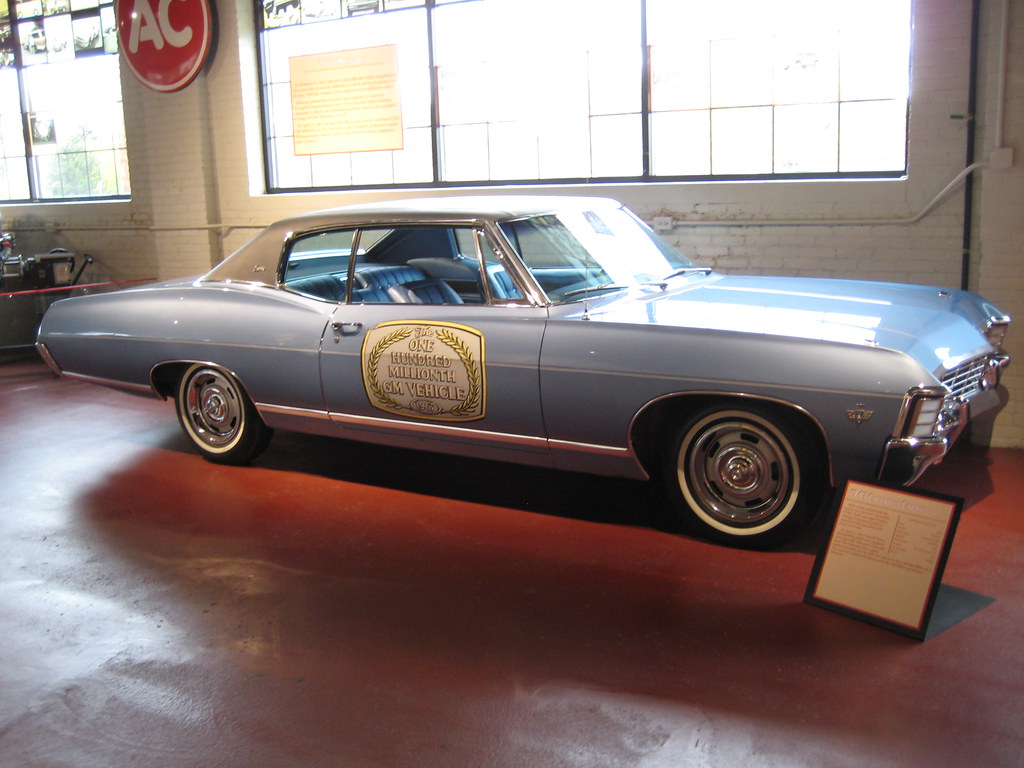
The allure of a brand-new car, with its sleek lines, advanced technology, and distinctive scent, is undeniable. Yet, the accompanying price tag, often exceeding $41,000 according to Kelley Blue Book in May 2021, can be a significant barrier for many. This daunting cost makes the used car market an increasingly attractive and financially prudent alternative for those seeking reliable transportation without the profound initial depreciation hit.
Indeed, buying a used car is a smart money move. As Jim Sharifi, formerly a content editor at Carfax, notes, a new vehicle can lose as much as 10% of its value within the first month and up to 20% in its first year of ownership. By opting for a used vehicle, the original owner has already absorbed this substantial depreciation, allowing you to acquire a car at a price that reflects its true market value more accurately.
While the prospect of saving money is appealing, the used car buying process can be intimidating and fraught with potential pitfalls, especially for those unfamiliar with automotive intricacies. This comprehensive guide, crafted in the spirit of impartial and objective consumer advocacy, aims to demystify the journey, providing practical, actionable advice to help you navigate the complexities, avoid common traps, and ultimately secure a used car that offers both value and peace of mind.

1. **Strategic Timing for Your Purchase**
Unlike the predictable annual release cycles of new car models, used cars enter the market continuously, depending on when previous owners conclude leases, sell vehicles, or opt for trade-ins. However, keen observation reveals specific periods during the year that present more favorable opportunities for buyers to secure a better deal on their next used vehicle.
Matt DeLorenzo, senior managing editor for Kelley Blue Book, highlights that large sales events for new models at dealerships often lead to an increased inventory of used vehicles. Dealerships receive more trade-ins during these promotions, creating a surplus that can work to the used car shopper’s advantage. Therefore, holiday sales periods such as Memorial Day, Fourth of July, and Labor Day are excellent times to explore the market.
Another opportune window is the end of a model year, typically around September or October. During this time, salespeople are motivated to finalize deals and clear out existing used vehicle stock to accommodate incoming new inventory. Furthermore, strategic shopping extends to the specific days of the week and month. Sharifi advises against weekend visits due to the high volume of customers and stretched sales staff; weekdays generally offer more dedicated attention from the sales team. Similarly, the close of a month or quarter can be advantageous, as dealerships strive to meet their sales quotas.
Read more about: The Road to 100,000+ Miles: Essential Lessons from Long-Term Single-Car Ownership

2. **Choosing Your Seller Wisely**
Where you decide to shop for a used car is a critical decision that can significantly impact the quality and reliability of your purchase. Prioritizing reputable sources is paramount to mitigate the risk of acquiring a “lemon” – a vehicle riddled with undisclosed issues or requiring extensive, unforeseen repairs. Understanding the different seller types and their implications is key to making an informed choice.
DeLorenzo strongly advises considering franchised car dealerships that offer certified pre-owned (CPO) vehicles. These cars undergo thorough inspections and typically include some form of warranty coverage, providing an added layer of security. While non-certified cars might be more budget-friendly, they often come with higher mileage and a greater likelihood of maintenance needs. It’s a trade-off between initial cost savings and potential future expenses.
Conversely, exercising caution with independent car lots that promise deals regardless of credit or circumstance is crucial. DeLorenzo warns that such establishments might lure customers with low prices, only to offer lower quality vehicles or charge substantially higher interest rates if financing is secured through them. To counter this, pre-qualifying for a loan at a bank or credit union before visiting a dealership provides valuable leverage for negotiating better financing terms. Regardless of the dealer, diligent research into online customer reviews and seeking recommendations from recent car buyers are indispensable steps.
Beyond dealerships, online platforms like Autotrader, Kelley Blue Book, Carfax, and Edmunds serve as trusted marketplaces. Buying from a private seller can also offer unique advantages, as Ron Montoya, senior consumer advice editor at Edmunds, points out that private parties may provide more accurate information about the vehicle’s driving history, service records, and specific issues. However, private sales are typically “as-is” transactions, requiring buyers to arrange their own financing and verify the owner holds a clear title, owning the car outright. Financially, private sellers often present lower prices, as they don’t have dealership overhead, repair, or marketing costs to factor into their asking price.
Read more about: Arm Your Ride: Essential Anti-Theft Strategies for Urban Drivers

3. **Matching the Vehicle to Your Lifestyle**
While it’s tempting to focus solely on numerical factors such as the car’s age, mileage, and price, a truly smart purchase hinges on whether the vehicle genuinely aligns with your long-term needs and lifestyle. A car is an investment in your daily life, and its practicality should be a primary consideration, ensuring it serves its intended purpose effectively for the duration of your ownership.
Montoya emphasizes the importance of evaluating practical aspects beyond the spec sheet. For example, if you anticipate a growing family, a two-door coupe or a compact vehicle might quickly prove inadequate, necessitating a premature and costly replacement. It is vital to envision how the car will integrate into your daily routine and accommodate future changes.
During your assessment, physically inspect the vehicle for adequate space. “You want to make sure there’s enough room for you,” Montoya advises, underscoring the importance of comfort and utility. Examine the cargo area to ensure it can handle your typical loads, whether groceries, luggage, or sports equipment. Furthermore, evaluate visibility from the driver’s seat, as good sightlines contribute significantly to driving safety and comfort. Don’t forget to test all features, including the entertainment system, to ensure they meet your expectations and function correctly.
Read more about: Buckle Up! 15 Iconic Celebrity Car Collections That Are Pure American Cool

4. **Assessing ‘Used’ Tolerance and Value**
Determining how “used” you are willing to go is a critical balance between cost savings and the potential for increased maintenance. Generally, an older car with higher mileage will be more affordable, but this affordability often comes with a greater likelihood of needing repairs. Every buyer has a unique comfort level regarding the extent of wear and tear they are prepared to accept and manage.
A common benchmark suggests that a car is driven approximately 12,000 miles per year. Therefore, a vehicle with significantly higher average mileage than this guideline might indicate more extensive wear and tear, potentially leading to more immediate maintenance concerns. Montoya highlights that used car buyers must actively seek a harmonious balance among the car’s age, its mileage, and the amount they are willing to invest. This thoughtful consideration helps in setting realistic expectations for future ownership costs.
For those seeking an added layer of assurance, purchasing an extended warranty or a service plan can offer considerable peace of mind. These plans typically cover certain repairs or maintenance tasks that might arise, cushioning the financial impact of unexpected issues. Additionally, Tomer Ruderman, Founder and Owner at Car Keys Ottawa, recommends focusing on reputable brands like Toyota, Honda, and Subaru, which are renowned for their reliability and often feature long-lasting, affordably maintained models. By combining these strategies, buyers can find a used car that not only fits their budget but also promises enduring value and fewer headaches down the road.
Read more about: Unlocking Power: 14 Essential Tools for American Muscle Car Restoration

5. **Mastering the Art of Pricing and Negotiation**
Securing a fair price is arguably one of the most crucial steps in the used car buying process, and it demands thorough preparation. Before committing to any sales price, it is imperative to conduct independent research into the vehicle’s market value. This due diligence ensures you are not overpaying and provides a strong foundation for any subsequent negotiations.
Numerous trusted online resources, including Carfax, Kelley Blue Book, and Edmunds, offer sophisticated price appraisal tools. These platforms can provide estimated values based on the car’s make, model, year, mileage, and condition. Supplementing this, comparing the vehicle in question with similar cars currently on the market can give you a clearer picture of its competitive market value. It’s important to remember, however, that no two used cars are exactly alike due to variations in how they were driven and maintained, meaning these comparisons serve as a guide rather than a definitive statement.
Armed with this comprehensive pricing information, you enter the negotiation phase with confidence and leverage. Do not hesitate to use all your gathered research to advocate for the best possible price. A key takeaway from experts like Bankrate is that dealerships anticipate buyers will push back on initial offers and fees; failing to negotiate places you at a significant disadvantage. Furthermore, when budgeting for your car purchase, extend your financial planning beyond the sticker price. Always factor in all associated costs, such as sales tax, the ongoing expense of car insurance, and the fees required for vehicle registration. Should you feel that the deal is not genuinely favorable, do not be afraid to walk away – there will always be other opportunities.
Read more about: Mastering the Car Trade-In: An Expert’s Guide to Negotiating a Better Price for Savvy Buyers

6. **Decoding the Vehicle’s Past: Title and History Reports**
A used car’s past can tell you a great deal about its future reliability, making a thorough investigation of its history an indispensable step before purchase. Beyond a visual inspection for obvious red flags like rust or mismatched paint, delving into official documentation provides crucial insights that superficial checks cannot reveal. The vehicle identification number (VIN) serves as the unique fingerprint for every car, unlocking a wealth of information.
Obtaining a vehicle history report, typically through services like Carfax, AutoCheck, or the free option at VehicleHistory.gov (NMVTIS), is paramount. This report provides a comprehensive overview, detailing the number of previous owners, any recorded accident history, verified mileage readings, the vehicle’s title status, and records of maintenance and repairs. It can also indicate if the car has been branded a “lemon.” While dealerships should provide these reports free of charge, private sellers may require you to purchase one, so save this expense until you are seriously interested in a specific vehicle. Packages of multiple reports can be cost-effective if you are considering several cars.
Careful scrutiny of the vehicle history report is essential. Sharifi advises vigilance for discrepancies in odometer readings and the presence of a branded or salvage title. A “branded title” indicates the car has been significantly compromised, such as through a total loss, fire, or flood. “Severe accidents and instances where a car has been declared a total loss should signal the buyer to use caution,” he states. However, he also notes that a minor fender bender shouldn’t automatically disqualify an otherwise great deal. Ruderman echoes this sentiment, emphasizing, “And definitely steer clear of cars with titles marked as salvage, rebuilt, or flood-damaged, as these can bring more trouble than they’re worth!” Always ensure the odometer readings progress logically throughout the car’s history, as inconsistent data could signal mileage alteration. Additionally, checking the car’s title via the National Motor Vehicle Title Information System (NMVTIS) website provides proof of ownership and protects against fraud, such as buying a stolen or flood-damaged vehicle, for which you would be unable to register or obtain a tag. The VIN, usually found on a sticker inside the driver’s door, is your key to accessing this vital information.
Read more about: VIN Check Secrets: Uncovering Hidden Dangers and Unmasking Value in Used Cars

7. **The Essential Test Drive and Professional Pre-Purchase Inspection**
No matter how pristine a vehicle appears on paper or in photographs, the ultimate assessment comes from experiencing it firsthand. An indispensable step in securing a reliable used car is the test drive, a non-negotiable opportunity to gauge its performance and feel. As Ron Montoya, senior consumer advice editor at Edmunds, wisely advises, “Always, always, always take a car for a spin before buying it.” This isn’t just a joyride; it’s a critical diagnostic session where your senses become your most valuable tools.
During this crucial spin, turn off the radio to eliminate distractions and intently listen for any unusual sounds emanating from the engine, transmission, or brakes, as Ruderman also points out, “Any strange noises from the engine, transmission, or brakes could indicate underlying problems.” Pay close attention to the steering; the car should maintain a straight path without pulling to one side. Test the brakes for responsiveness and smoothness, check for fluid acceleration, and ensure turns feel tight and controlled. Beyond the driving dynamics, ensure all interior features function as expected, from the air conditioning and heater to the windows and entertainment system. Ruderman also recommends bringing “a friend or family member to get a second opinion during the test drive.”
While your personal observations are vital, they cannot replace the trained eye of a professional. Before finalizing any purchase, it is paramount to engage an independent mechanic for a comprehensive pre-purchase inspection. This expert evaluation can uncover hidden issues and potential future repair costs that might be invisible to an untrained buyer. Many reputable car shops and service centers offer such inspections, providing an invaluable layer of protection.
A significant red flag should immediately arise if a seller or dealership refuses to allow an independent mechanic to inspect the vehicle prior to purchase. This reluctance often signals undisclosed problems. As certified master automotive technician Jason Farrell emphasizes, a good mechanic can “find problems you can’t see.” Investing a small amount in a professional inspection upfront can save you thousands of dollars and countless headaches down the road, ensuring you make an informed decision based on expert assessment rather than assumption.
Read more about: Guard Your Investment: 14 Common Mistakes That Instantly Slash Your Classic Car’s Value by $10,000

8. **Detecting Deception: Identifying Odometer Rollback and Title Washing Scams**
Even in our technologically advanced age, some of the oldest tricks in the book persist, notably odometer rollback and title washing. These deceptive practices are designed to inflate a used car’s value artificially, leaving unsuspecting buyers with a vehicle far less reliable than it appears. The Better Business Bureau reported hundreds of fake or nonexistent used-car listings in 2023, underscoring the prevalence of sophisticated scams.
Odometer rollback involves the deliberate alteration of a car’s mileage to show a lower figure, directly increasing its perceived worth. For instance, a vehicle with 150,000 miles might be presented as having only 100,000, fetching a significantly higher price. Detecting this fraud requires keen observation and diligence. Look for physical signs of wear that don’t match the displayed mileage, such as excessively worn steering wheels, pedals, floor mats, or seats. These indicators suggest the car has been driven much more extensively than the odometer implies.
Furthermore, always scrutinize the vehicle history report for any inconsistencies in mileage readings. “If you notice mileage decreases or unusual gaps, that’s a red flag,” as the context highlights. Be suspicious if a car with supposedly low mileage has unusually new braking systems or a recently replaced timing belt, as these components typically last for tens of thousands of miles, hinting at higher actual usage. “Make sure the odometer readings make sense throughout the car’s history so you don’t end up with a car that’s had its mileage altered,” advises Tomer Ruderman.
Another particularly insidious scam is title washing, where crucial information about a car’s real condition or history is falsified on its title. This often involves removing “title brandings” like “salvage,” “rebuilt,” or “water damage” that are assigned after severe accidents or natural disasters. Acquiring a car with a washed title means inheriting potentially catastrophic hidden damage. Ruderman sternly warns, “And definitely steer clear of cars with titles marked as salvage, rebuilt, or flood-damaged, as these can bring more trouble than they’re worth!” Always verify the title through reliable sources like the National Motor Vehicle Title Information System (NMVTIS) to protect yourself against such egregious fraud.
Read more about: VIN Check Secrets: Uncovering Hidden Dangers and Unmasking Value in Used Cars

9. **Navigating Dealership Negotiations: Uncovering Hidden Fees and Payment Traps**
The car buying journey, especially at dealerships, can often feel like navigating a financial minefield, expertly laid out to maximize profit at the buyer’s expense. Dealerships have perfected a range of tactics, from embedding hidden fees to manipulating monthly payments, all designed to inflate the final price. Being informed and prepared is your strongest defense against these prevalent rip-offs.
One of the most common ploys involves tacking on a variety of “hidden fees” that can add thousands to your total. These often include “Dealer Prep Fees,” an unnecessary charge for basic vehicle preparation that should already be part of the car’s price. “Documentation Fees” can be dramatically inflated in unregulated states, while “Market Adjustment Fees” are arbitrary charges added in high-demand periods. Some dealers even attempt to pass off their “Advertising Fees” directly to you. It is imperative to identify these charges on your invoice and push back, as “dealerships expect buyers to push back on initial offers and fees,” according to Bankrate. Researching market pricing online provides critical leverage to ensure you are not overpaying.
Another prevalent tactic is “monthly payment manipulation,” where dealerships steer conversations towards a “low monthly payment” rather than the total cost of the car. This strategy allows them to extend the loan term significantly, leading you to pay substantially more in interest over time. It also provides an easy way to hide additional fees by rolling them discreetly into your long-term payments. Moreover, focusing on monthly payments allows them to offer higher interest rates than you might qualify for elsewhere.
To counter this, always focus on the total purchase price and secure independent financing pre-approval from a bank or credit union before stepping into a dealership. This empowers you with a clear understanding of your financial capabilities and provides a benchmark for comparing any financing offers from the dealer. By shifting the focus from monthly installments to the overall cost, you retain control and prevent yourself from being lured into a deal that appears affordable monthly but costs a fortune in the long run.

10. **Smart Spending: Steering Clear of Unnecessary Add-Ons and Upsells**
Even after settling on a price for the vehicle, the dealership’s efforts to increase profit margins continue, often through aggressive promotion of add-ons and extra packages. These upsells, while presented as essential protections or enhancements, frequently offer little real value and are designed primarily to boost the dealer’s bottom line. Savvy consumers must remain vigilant and discerning about what truly adds value to their purchase.
Among the most common add-ons are “Extended Warranties.” While the peace of mind they offer might seem appealing, many of these warranties provide minimal actual value, often overlapping with existing manufacturer coverage. Before considering one, thoroughly understand its terms, exclusions, and whether it genuinely offers benefits beyond what’s already provided by the car’s original warranty or reputable service plans. For many, taking the car to a trusted mechanic for regular maintenance is a more cost-effective approach than an expensive, limited extended warranty.
Other frequently pushed extras include “Rustproofing & Fabric Protection,” which are largely redundant for modern vehicles engineered with advanced corrosion resistance and durable interior materials. Similarly, “VIN Etching,” where your vehicle identification number is etched onto glass components for theft deterrence, is often charged at an exorbitant rate far exceeding its actual value. “Tire & Wheel Protection” may seem attractive, but unless you consistently navigate roads with extreme conditions, the cost often outweighs the potential benefits.
The art of negotiation extends beyond the car’s sticker price to these add-ons. Dealerships anticipate buyers will challenge these additional charges. If you find yourself uncomfortable with the haggling process, you risk paying far more than necessary. Arm yourself with research on the actual value and necessity of these services, and do not hesitate to decline any add-ons that you deem unnecessary or overpriced. Remember, the goal is to drive away with a car that meets your needs without paying for superfluous extras.

11. **Your Rights as a Buyer: Understanding Lemon Laws and Recalls**
Even with meticulous research and inspection, purchasing a used car can sometimes lead to unforeseen problems. This is where understanding your consumer rights, particularly “lemon laws” and the process for addressing recalls, becomes invaluable. These protections are designed to safeguard buyers from being stuck with defective vehicles, providing a crucial recourse when a purchased car falls short of acceptable standards.
Lemon laws are state-specific statutes that protect consumers who purchase defective vehicles. While their scope can vary, these laws generally apply when a vehicle has a significant defect that substantially impairs its use, value, or safety, and the manufacturer or dealer has been unable to repair it after a reasonable number of attempts. Recent legislative changes, such as Colorado’s stronger lemon law in August 2024, are expanding coverage and providing buyers more time to file claims, signaling a growing trend in consumer protection nationwide.
These laws aren’t just theoretical; they offer tangible protection, even for used car buyers. As demonstrated by cases where clients successfully secured full repurchases or buybacks for used vehicles with undisclosed engine problems or prior damage, lemon laws empower consumers to challenge sellers. “Most of all, they highlight the importance of understanding your rights as a consumer! Knowledge is power,” emphasizes the context. Knowing these laws exist and how they can be applied can transform a frustrating situation into a successful resolution.
Beyond defects, it is equally important to check for any outstanding manufacturing recalls. These are safety-related defects identified by the manufacturer that require repair or replacement, often at no cost to the owner. You can easily determine if a vehicle is subject to a recall by entering its Vehicle Identification Number (VIN) at the National Highway Traffic Safety Administration (NHTSA) website. Addressing recalls ensures the car meets safety standards and prevents potential issues down the line.

12. **When Trouble Strikes: Steps to Take If You’ve Been Scammed or Bought a Defective Car**
Despite all precautions, sometimes a used car purchase goes awry. Whether it’s a vehicle with undisclosed problems or an outright scam, knowing your options and acting swiftly can make a significant difference in resolving the situation. Understanding the legal landscape and available resources is key to protecting your investment and sanity.
While it’s “generally considered unethical to sell a car without disclosing problems,” federal regulations are often more stringent for new cars than used ones. This regulatory gap makes your pre-purchase diligence even more critical. If you discover problems after the sale, particularly with a private seller, the situation can be complicated. Most private transactions are considered “as is,” meaning the buyer assumes responsibility for issues learned after the sale. However, if the seller engaged in outright deception, such as odometer tampering (a federal crime), filing a police report may be a viable course of action.
For purchases from a dealership, return policies vary significantly by state. Some states mandate a return option, often within a short period like three days. It’s always prudent to inquire about the dealer’s specific return policy in writing before completing a transaction and to check with your state attorney general’s office for local regulations. This foresight can provide a crucial escape route if the car proves problematic shortly after purchase.
If you find yourself with a problematic car, “Acting fast is important,” according to Jason Farrell. He recommends first documenting all issues thoroughly and then attempting to resolve the problem directly with the seller. If this proves unsuccessful, escalate the matter by contacting a lawyer, the Better Business Bureau, or the Bureau of Consumer Protection. Furthermore, if the used car is relatively new or has low mileage, it might still be covered under its original factory warranty, a possibility worth exploring with a local dealership for potential free repairs.
Navigating the used car market requires more than just finding a good deal; it demands an informed, vigilant, and proactive approach to safeguard your hard-earned money and ensure peace of mind. By embracing the strategies outlined in this guide – from meticulous inspections to understanding your consumer rights – you transform from a mere buyer into an empowered decision-maker. The road to a reliable used car, free from financial traps and hidden defects, is paved with knowledge and confidence. Drive on, knowing you’ve equipped yourself with the ultimate toolkit for smart, secure car ownership.



